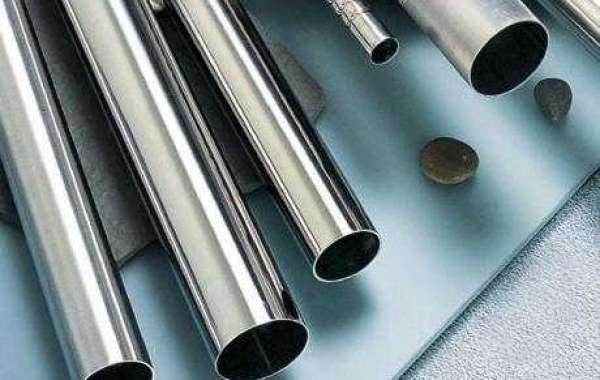Huzhou Nanxun Yintuo Special Material Technology Co., Ltd. specializes in the development and production of high-quality stainless steel seamless tubes and nickel-nickel alloys. Now let’s introduce super austenitic stainless steel seamless pipe and tube. The concept of super austenitic stainless steel appeared together with super ferritic stainless steel and super duplex stainless steel.
The famous brands of austenitic stainless steel pipes are 18-8 (daily 18-10 or 19-9) type 304 stainless steel (00Cr19Ni10 in China) and 18-12-2 316 (0Cr17Ni12Mo2). In order to solve the susceptibility to intergranular corrosion caused by the chromium depletion caused by the precipitation of chromium carbides after welding of austenitic stainless steel, the early carbide stabilizing elements titanium and niobium were added. In the late 1960s, AOD and VOD, etc. The advent of the out-of-furnace refining technology has reduced the carbon content in steel to ≤0.03%, solved the susceptibility to intergranular corrosion in the sensitized state (post-welded) of austenitic stainless steel, improved the purity of the steel, and solved The sensitivity of steel to intergranular corrosion in solid solution state. Therefore, since the 1980s, the newly developed austenitic stainless steels are basically ultra-low carbon type.
In order to meet the demand for resistance to full-scale corrosion of harsh media in the development of modern industry, on the basis of stainless steel pipes such as 304 and 316, the content of chromium, nickel, and molybdenum in steel is increased, and elements such as copper and silicon are added or the residual amount of impurity elements is reduced. Many new high-alloy grades have been developed. From 1962 to 1971, general corrosion and intergranular corrosion have been greatly reduced. From 1962 to 1997, local corrosion such as stress corrosion, pitting corrosion, crevice corrosion and corrosion fatigue still accounted for a relatively high proportion of corrosion damage. Through research, people have learned that increasing the amount of nickel in austenitic stainless steel tubes can significantly improve the stress corrosion resistance of steel, and increasing the amount of chromium and molybdenum can significantly improve the pitting and crevice corrosion resistance of steel. Stress corrosion and corrosion fatigue are usually caused by pitting corrosion and crevice corrosion. Therefore, people have begun to pay attention to the development of high-alloy austenitic stainless steel with excellent pitting corrosion resistance and crevice corrosion resistance.
We are constantly moving forward, but we also see the stars and ambitious ambitions. For more information, please contact us: austenitic stainless steel seamless pipe manufacturer.






